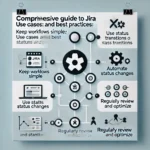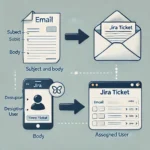TestNG vs. Selenium: Choosing the Right Combination for Powerful Test Automation
In the world of test automation, two powerful tools have emerged as popular choices among software testers and developers: TestNG and Selenium. While TestNG is a versatile testing framework for Java, Selenium is a robust open-source automation tool widely used for web application testing. In this blog post, we will explore the key features and strengths of TestNG and Selenium, as well as the benefits of using them in combination to achieve efficient and comprehensive test automation for your projects.
TestNG: The All-in-One Testing Framework
TestNG, an abbreviation for “Next Generation,” was developed to enhance the capabilities of JUnit and provide advanced testing functionalities for Java applications. It is designed to simplify test configuration, parallel execution, and test grouping, making it an ideal choice for unit testing and integration testing.
Advantages of TestNG
- Test Configuration: TestNG allows testers to define test suites, test cases, and test methods using XML configuration files, making it easier to manage complex test scenarios and execute specific tests based on different parameters.
- Parallel Execution: One of TestNG’s standout features is native support for parallel test execution. It can run tests in parallel, significantly reducing overall test execution time, especially when dealing with extensive test suites.
- Dependency Management: TestNG enables testers to establish dependencies between test methods, ensuring that tests are executed in the desired order. This ensures that the test environment is adequately set up before running critical tests.
- Flexible Annotations: TestNG provides a wide range of annotations, such as @Test, @BeforeTest, @AfterTest, and more, allowing testers to manage pre- and post-test actions, set priorities, and group tests efficiently.
https://synapsefabric.com/2023/07/26/testng-vs-cucumber-a-comparative-analysis-of-java-testing-frameworks/
Selenium: The Leading Web Automation Tool
Selenium is an industry-standard automation tool known for its capabilities in automating web browsers for testing web applications. It supports multiple programming languages, including Java, and is widely used for functional testing of web interfaces.
Advantages of Selenium
- Cross-Browser Testing: Selenium allows testers to execute the same test across different web browsers, ensuring compatibility and consistency of the application’s behavior across various platforms.
- Wide Browser Support: Selenium supports all major web browsers, such as Chrome, Firefox, Edge, Safari, and more, allowing testers to ensure compatibility across different browsers.
- Web Element Interaction: Selenium provides a rich set of APIs to interact with web elements, enabling testers to simulate user actions like clicking buttons, filling forms, and handling alerts.
- Integration with TestNG: Selenium can be seamlessly integrated with TestNG, leveraging TestNG’s advanced features to manage test configuration, parallel execution, and test reporting.
Choosing the Right Combination
The decision to use TestNG and Selenium together is a powerful one, as it allows you to take advantage of TestNG’s comprehensive testing framework and Selenium’s robust web automation capabilities.
Use TestNG with Selenium if
- You are developing web applications in Java and need a powerful testing framework to manage test suites and execute tests in parallel efficiently.
- You require advanced test configuration and dependency management to ensure smooth test execution.
- You want to take advantage of TestNG’s flexible annotations to handle pre- and post-test actions and prioritize test cases.
- You need to perform cross-browser testing to ensure consistent performance across various web browsers.
TestNG and Selenium are both essential tools in the arsenal of any software tester or developer looking to achieve efficient and comprehensive test automation. By combining TestNG’s robust testing framework and Selenium’s powerful web automation capabilities, you can create a seamless and powerful testing suite that helps deliver high-quality web applications with confidence.
Whether you are testing small web projects or large enterprise applications, leveraging the strengths of TestNG and Selenium in tandem will undoubtedly streamline your test automation process and lead to more reliable and successful software delivery.






